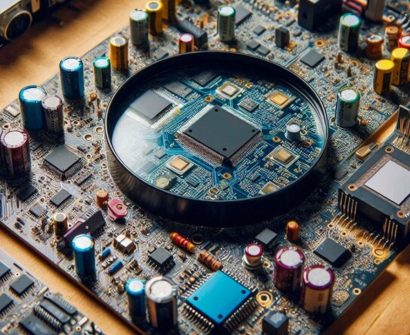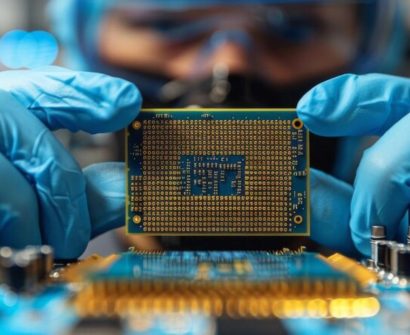VHDL Full Form:The VHSIC Hardware Description Language (Getting Started)

Introduction
VHDL, Full Form for VHSIC Hardware Description Language, is a powerful tool used in electronic design automation to describe digital and mixed-signal systems such as field-programmable gate arrays (FPGAs) and integrated circuits (ICs). VHSIC itself stands for Very High-Speed Integrated Circuits. This blog post will guide you through the basics of VHDL, its significance, and how to get started with this versatile language.
What is VHDL,VDHL Full Form?
VHDL Full Form is a hardware description language that enables designers to model the behavior and structure of electronic systems. Unlike traditional programming languages like C or Python, VHDL is used to describe the hardware itself, not just the software running on it. Consequently, this makes VHDL a critical skill for anyone involved in digital design and FPGA development.
Why Learn VHDL?
- Industry Standard: VHDL is widely used in the industry for designing and simulating digital circuits.
- FPGA Development: Essential for FPGA programming and creating custom hardware solutions.
- Design Reusability: Promotes reusable and modular design practices.
- Simulation and Testing: Facilitates thorough testing and verification of hardware designs before physical implementation.
Getting Started with VHDL
1. Understanding VHDL Syntax and Structure
To begin with, VHDL code is organized into entities and architectures. An entity defines the interface of a hardware module, while the architecture describes its internal behavior and structure.
Example: Basic VHDL Structure
vhdlCopy codeentity AND_Gate is
Port ( A : in STD_LOGIC;
B : in STD_LOGIC;
Y : out STD_LOGIC);
end AND_Gate;
architecture Behavioral of AND_Gate is
begin
Y <= A and B;
end Behavioral;
In this example, we define an AND gate with two inputs (A and B) and one output (Y).
2. Setting Up Your VHDL Development Environment
To start coding in VHDL, you need the following tools:
- VHDL Editor: Use editors like Notepad++, Sublime Text, or IDEs such as Xilinx Vivado, Altera Quartus, or ModelSim.
- Simulator: Tools like ModelSim or GHDL allow you to simulate your VHDL code and verify its functionality.
- FPGA Development Board: Boards like the Xilinx Spartan or Altera Cyclone are excellent for testing your designs on actual hardware.
3. Writing Your First VHDL Program
Next, begin with simple designs like logic gates, adders, and multiplexers. This helps build a strong foundation before moving to complex systems.
Example: 4-bit Adder
vhdlCopy codeentity Adder is
Port ( A : in STD_LOGIC_VECTOR (3 downto 0);
B : in STD_LOGIC_VECTOR (3 downto 0);
Sum : out STD_LOGIC_VECTOR (3 downto 0);
Carry : out STD_LOGIC);
end Adder;
architecture Behavioral of Adder is
begin
process (A, B)
variable temp: STD_LOGIC_VECTOR (4 downto 0);
begin
temp := ('0' & A) + ('0' & B);
Sum <= temp(3 downto 0);
Carry <= temp(4);
end process;
end Behavioral;
This VHDL code describes a simple 4-bit adder that takes two 4-bit inputs (A and B) and produces a 4-bit sum and a carry output.
Learning Resources
Moreover, there are plenty of resources to help you learn VHDL:
- Books: “VHDL for Engineers” by Kenneth L. Short, “Digital Design with RTL Design, VHDL, and Verilog” by Frank Vahid.
- Online Courses: Platforms like Coursera, Udemy, and edX offer comprehensive VHDL courses.
- Documentation: IEEE Standard VHDL Language Reference Manual.
Conclusion
In conclusion, starting with VHDL can be a rewarding experience, opening doors to advanced digital design and FPGA development. By understanding the basics, setting up your environment, and practicing with simple projects, you can master VHDL and create complex hardware designs. Additionally, dive into the resources available, practice consistently, and you’ll be well on your way to becoming proficient in VHDL.
Remember, VHDL is not just a language but a key to unlocking advanced digital system design. Happy coding!
4o
Also Read : fpga architecture in vlsi
To know more about VLSI Course , SuccessBridge VLSI training institute. You can begin your VLSI career by enrolling in the placement-assisted live courses available at SuccessBridge We offer various VLSI online courses. We offer VLSI Physical Design course, Design Verification course, DFT Training , Chip design course many more. Explore VLSI Courses From The Leaders In VLSI Training
Remember, VHDL is not just a language but a key to unlocking advanced digital system design. Happy coding!






